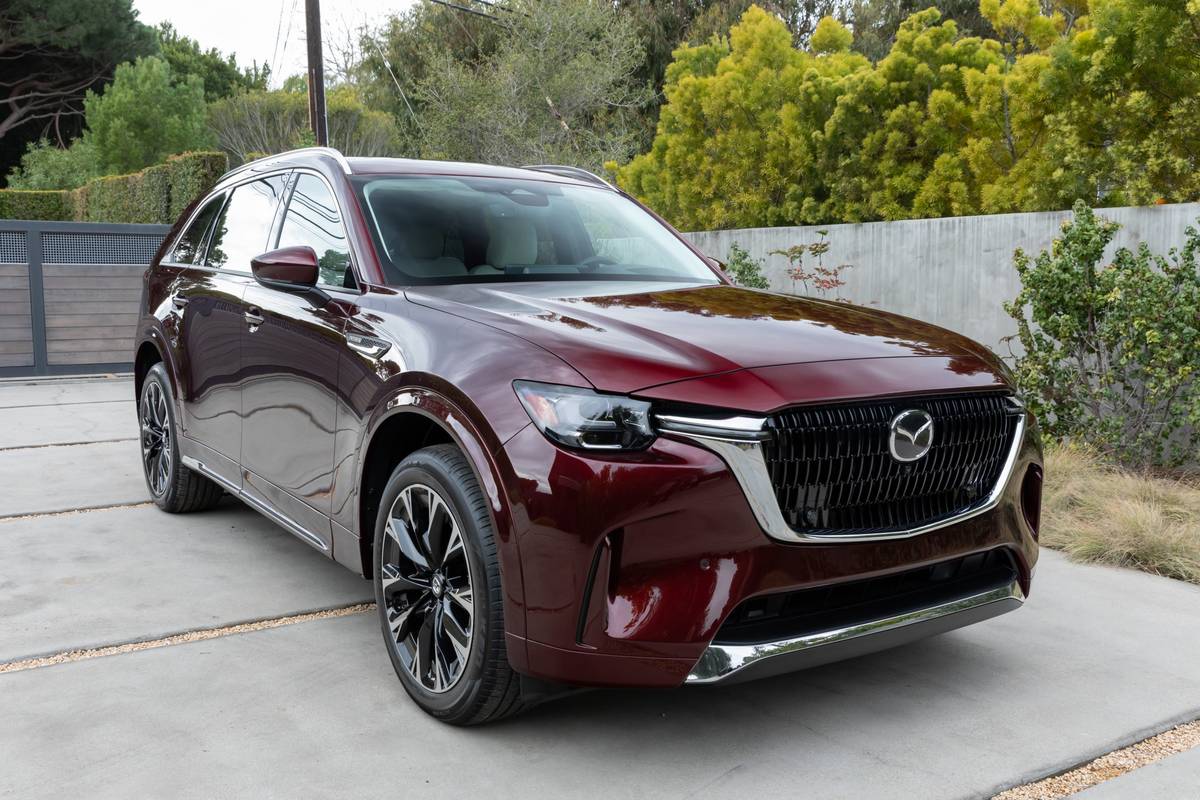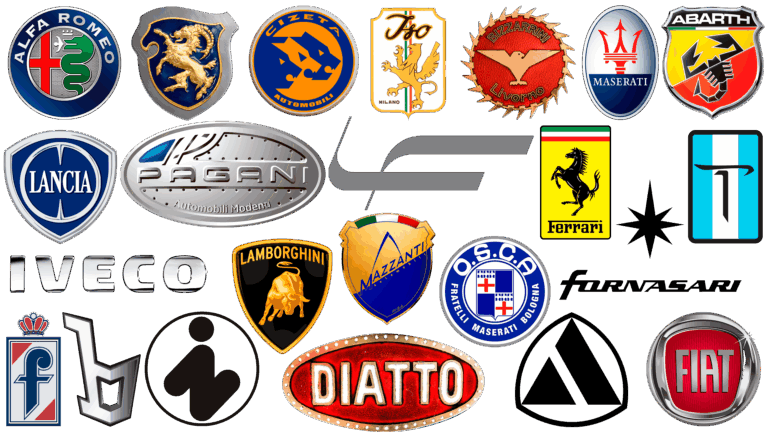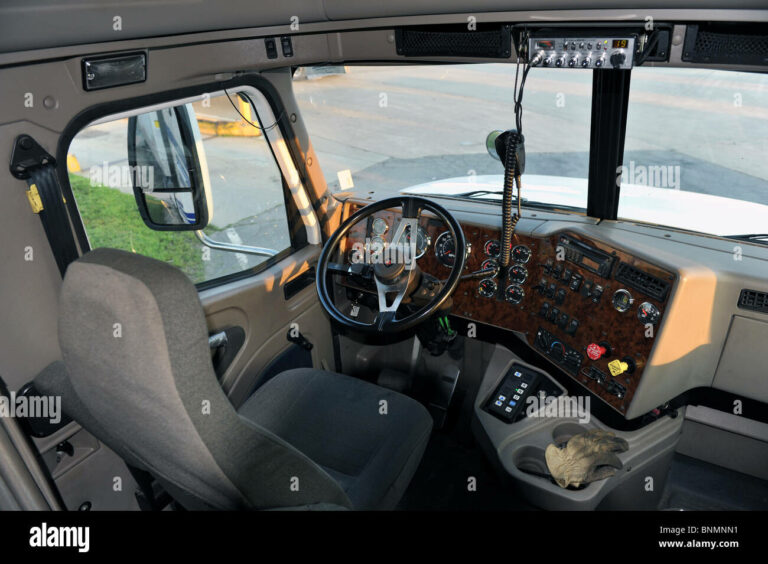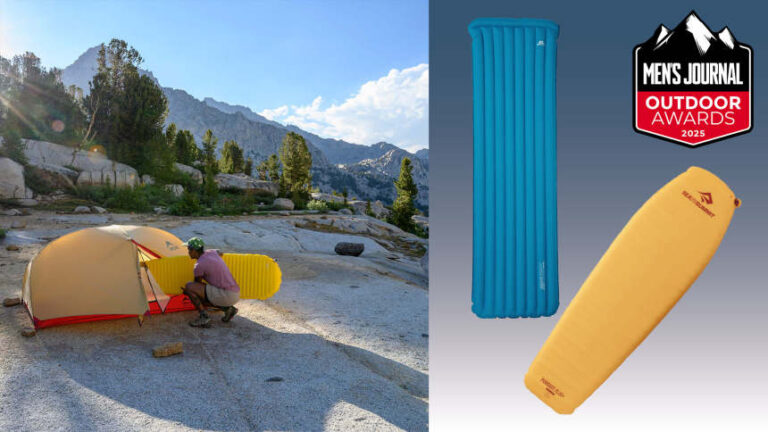Is Mazda A Good Car Brand?
Is Mazda A Good Car Brand? cars.truckstrend.com
In the vast automotive landscape, where choices abound and competition is fierce, one question frequently arises for prospective car buyers: "Is Mazda a good car brand?" This isn’t a simple yes or no query, but rather an invitation to explore the unique philosophy, engineering prowess, and design sensibilities that define Mazda. A "good" car brand, in the eyes of many, encompasses a harmonious blend of reliability, performance, safety, value, and aesthetic appeal, all culminating in a satisfying ownership experience.
Mazda has, for decades, carved out a distinctive niche for itself, often punching above its weight class. It’s a brand that doesn’t chase segment sales leadership through sheer volume, but rather through a commitment to driving pleasure and a premium feel that often belies its mainstream pricing. This article will delve into the various facets of Mazda’s offerings, from its driver-centric engineering to its award-winning design, to provide a comprehensive answer to whether Mazda truly stands as a good car brand in today’s competitive market.
Is Mazda A Good Car Brand?
The Philosophy of Jinba Ittai: Driver-Centric Design
At the heart of every Mazda lies the philosophy of "Jinba Ittai," a Japanese concept translating to "horse and rider as one." This isn’t just marketing jargon; it’s the guiding principle behind Mazda’s engineering. The goal is to create a seamless connection between the driver and the vehicle, making every journey, whether a quick grocery run or a long road trip, genuinely engaging.
This philosophy translates into several tangible benefits:
- Responsive Steering: Mazdas are known for their precise and communicative steering, allowing drivers to feel connected to the road.
- Balanced Chassis: The suspension tuning often strikes an excellent balance between comfortable ride quality and agile handling, minimizing body roll and maximizing control.
- Ergonomic Interiors: Controls are intuitively placed, and the driving position is carefully optimized for comfort and visibility, ensuring the driver feels at ease and in command.
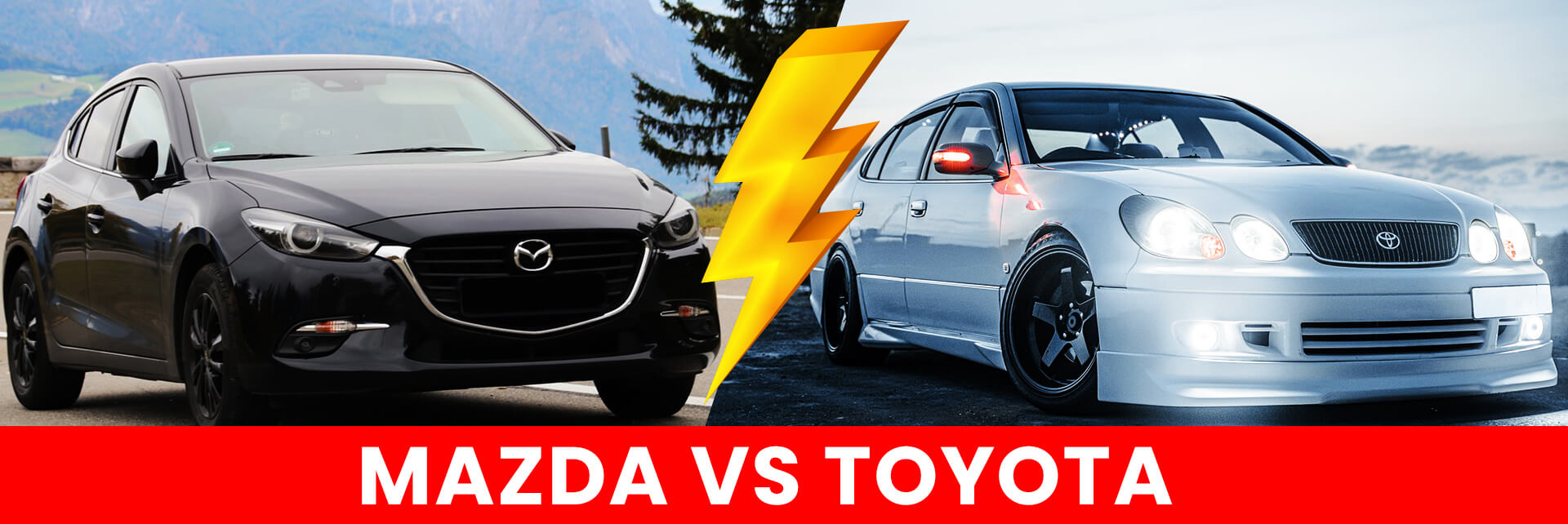
The result is a driving experience that feels more sophisticated and enjoyable than many competitors in its price bracket. From the iconic MX-5 Miata, which epitomizes Jinba Ittai, to family-friendly SUVs like the CX-5 and CX-50, this driver-centric approach permeates the entire lineup, making Mazda a compelling choice for those who genuinely enjoy driving.
Reliability and Durability: A Consistent Performer
When evaluating if Mazda is a good car brand, reliability is paramount. Mazda has consistently ranked high in various independent reliability studies, often outperforming many competitors and even some luxury brands.
- J.D. Power: Mazda frequently appears at or near the top of J.D. Power’s Vehicle Dependability Study (VDS) and Initial Quality Study (IQS), indicating fewer problems reported by owners.
- Consumer Reports: This influential consumer advocacy organization often places Mazda among the most reliable brands, citing robust engineering and a focus on proven technologies.
- RepairPal: Data from platforms like RepairPal suggests that Mazda’s average annual repair costs are lower than the overall average for all car brands, and the frequency of unscheduled repairs is also below average.

This consistent performance is attributed to Mazda’s meticulous quality control, thoughtful engineering, and a strategy that prioritizes refinement of existing, proven technologies over rushing unproven ones to market. While no car is immune to issues, Mazda’s track record suggests a strong commitment to building vehicles that last and require fewer unexpected repairs, contributing significantly to a positive ownership experience.
Design Language: Kodo – Soul of Motion
Beyond engineering, Mazda distinguishes itself with its captivating "Kodo – Soul of Motion" design language. Unlike some brands that embrace aggressive or overly complex styling, Mazda opts for a minimalist yet highly sophisticated aesthetic that focuses on natural, flowing lines and reflections.
Key aspects of Kodo design include:
- Elegant Proportions: Mazda vehicles often feature long hoods, set-back cabins, and subtle curves that evoke a sense of motion even when stationary.
- Premium Interior Craftsmanship: Stepping inside a modern Mazda reveals an interior that feels significantly more upscale than its price tag suggests. High-quality materials, meticulous stitching, and thoughtful layouts create an inviting and refined cabin environment.
- Timeless Appeal: The clean and uncluttered design ensures that Mazdas tend to age gracefully, maintaining their visual appeal years after they leave the showroom.
This commitment to design excellence not only enhances the vehicle’s curb appeal but also contributes to a strong sense of pride for owners. It’s a key factor in why many consider Mazda a "good" brand, offering a premium look and feel without the premium price tag.
Performance and Powertrains: Skyactiv Technology
Mazda’s approach to performance and efficiency is encapsulated in its "Skyactiv Technology." This comprehensive suite of innovations encompasses engines, transmissions, chassis, and body structures, all designed to work in harmony for optimal performance and fuel economy.
- Skyactiv-G Engines: These gasoline engines feature exceptionally high compression ratios (among the highest for naturally aspirated engines), allowing for more efficient combustion and a balance of power and fuel economy. They deliver smooth, linear acceleration that feels responsive and predictable.
- Skyactiv-Drive Transmissions: Both automatic and manual transmissions are engineered for direct, satisfying shifts, further enhancing the driver’s connection to the car.
- G-Vectoring Control Plus (GVC Plus): This innovative system subtly adjusts engine torque based on steering input, optimizing vehicle load transfer during cornering. The result is smoother, more stable handling and a more comfortable ride for occupants, especially on winding roads.
While Mazda has historically focused on naturally aspirated engines, they are now expanding into more advanced powertrains with the introduction of turbocharged options, mild-hybrid systems, plug-in hybrids (PHEV) like the CX-90 PHEV, and even a battery electric vehicle (BEV) with the MX-30, showcasing their evolving commitment to efficiency and performance across different energy sources.
Safety Features: i-Activsense Suite
Safety is a non-negotiable aspect of a "good" car brand, and Mazda has consistently demonstrated a strong commitment to protecting its occupants. Their suite of advanced safety technologies, known as "i-Activsense," aims to prevent accidents and mitigate their severity.
Many i-Activsense features come standard or are widely available across the Mazda lineup, including:
- Mazda Radar Cruise Control (MRCC): Maintains a set distance from the vehicle ahead.
- Smart Brake Support (SBS): Detects potential frontal collisions and can apply the brakes automatically.
- Blind Spot Monitoring (BSM) with Rear Cross-Traffic Alert (RCTA): Warns drivers of vehicles in their blind spots or approaching from the side when backing up.
- Lane-Keep Assist (LKA) and Lane Departure Warning (LDW): Help keep the vehicle within its lane.
- Adaptive Front-lighting System (AFS): Swivels headlights in the direction of a turn.
Mazda vehicles consistently earn high safety ratings from organizations like the Insurance Institute for Highway Safety (IIHS), with many models receiving the coveted "Top Safety Pick+" award. This robust suite of active and passive safety features provides peace of mind for drivers and passengers alike.
Value Proposition and Ownership Costs
Assessing Mazda as a good car brand also involves understanding its value proposition and the overall cost of ownership. Mazda occupies a unique space in the market, often referred to as "premium mainstream." This means they offer a near-luxury experience at a price point that is typically more accessible than true luxury brands.
- Initial Purchase Price: Mazda’s MSRPs are competitive within their segments, offering a compelling alternative to brands like Honda and Toyota, while providing a more upscale feel.
- Resale Value: Due to their strong reliability, attractive design, and consistent demand, Mazdas tend to hold their value well over time, which is a significant factor in long-term ownership costs.
- Maintenance Costs: As noted in the reliability section, average repair and maintenance costs for Mazdas are generally reasonable, often lower than many European luxury brands and comparable to other mainstream Japanese manufacturers.
- Fuel Efficiency: Skyactiv technology ensures competitive fuel economy across the range, further contributing to lower running costs.
When you factor in the engaging driving experience, premium interior, strong safety, and proven reliability, Mazda offers an excellent return on investment, making it a highly valuable choice for many consumers.
Potential Challenges and Considerations
While Mazda offers numerous compelling advantages, it’s also important to consider a few potential challenges or areas where it might not align with every buyer’s preferences:
- Limited Powertrain Variety (Historically): Until recently, Mazda’s focus on naturally aspirated engines meant fewer hybrid or purely electric options compared to competitors like Toyota or Hyundai. This is changing with newer models like the CX-90 PHEV and MX-30 EV, but the transition is still ongoing.
- Brand Perception: Despite its premium aspirations and quality, Mazda is still largely perceived as a mainstream brand by the general public, which might not appeal to buyers solely seeking a luxury badge.
- Infotainment Interface: While the Mazda Connect infotainment system is praised for its intuitive rotary controller and minimal driver distraction (touchscreen only works when stationary for safety), some users accustomed to large, flashy touchscreens might find it less feature-rich or visually striking than competitors.
- Dealer Network Size: In some regions, Mazda’s dealer network might be smaller than that of giants like Toyota or Honda, potentially affecting service accessibility for a very small percentage of buyers.
These considerations are minor for most and are often outweighed by Mazda’s core strengths, but they are worth noting for specific buyer preferences.
Practical Advice and Actionable Insights
If you’re considering a Mazda, here’s some practical advice to help you make an informed decision:
- Test Drive Multiple Models: Experience the Jinba Ittai philosophy firsthand. Drive a Mazda3, CX-5, or even the MX-5 Miata to feel the difference in driving dynamics compared to competitors.
- Consider Your Driving Needs: If you prioritize an engaging driving experience, sophisticated design, and proven reliability, Mazda is likely an excellent fit. If your primary concern is maximum cargo space or the widest array of hybrid options, other brands might have more models to consider.
- Research Specific Model Reliability: While Mazda as a brand is reliable, always check specific model year reviews on sites like Consumer Reports or J.D. Power for any known issues.
- Compare Trim Levels: Mazda offers various trim levels that significantly enhance the interior quality and feature set. Don’t just look at the base model; higher trims often deliver the true "premium" Mazda experience.
- Factor in Long-Term Ownership: With good reliability and decent resale value, a Mazda often proves to be a smart financial decision in the long run.
Mazda Model Lineup: Approximate Starting MSRPs
Here’s a representative table of popular Mazda models with their approximate starting Manufacturer’s Suggested Retail Prices (MSRPs) in the U.S. market. Please note that prices can vary by region, trim level, optional features, and are subject to change. They do not include destination charges, taxes, title, or license fees.
| Model | Type | Starting MSRP (Approx. USD) | Key Features / Notes |
|---|---|---|---|
| Mazda3 Sedan | Compact Car | $24,170 | Elegant design, engaging drive, premium interior. Available with AWD and turbocharged engine. |
| Mazda3 Hatchback | Compact Car | $25,170 | Sportier styling, increased cargo versatility. Available with AWD and turbo. |
| Mazda CX-30 | Subcompact Crossover | $24,995 | Sleek design, elevated seating, standard i-Activ AWD. Urban-friendly size. |
| Mazda CX-5 | Compact Crossover | $29,300 | Mazda’s best-seller. Balanced performance, refined cabin, standard i-Activ AWD. |
| Mazda CX-50 | Compact Crossover | $30,300 | More rugged design, enhanced off-road capability focus. Standard i-Activ AWD. |
| Mazda CX-90 | Mid-Size 3-Row SUV | $39,595 | All-new, larger premium SUV. Inline-six engines, PHEV option, RWD-based platform. |
| Mazda MX-5 Miata | Sports Car | $28,985 | Iconic lightweight roadster. Pure driving pleasure, perfect balance. Soft Top (ST) and RF (retractable fastback). |
| Mazda MX-30 EV | Electric Crossover | $34,110 | Mazda’s first EV (limited range, specific markets). Unique freestyle doors. |
Disclaimer: Prices are approximate starting Manufacturer’s Suggested Retail Prices (MSRP) for base models in the U.S. market as of late 2023/early 2024 and are subject to change. They do not include destination charges, taxes, title, license, or optional equipment.
Frequently Asked Questions (FAQ)
Q1: Is Mazda considered a luxury brand?
A1: While Mazda is not officially categorized as a luxury brand, it consistently aims for a "premium mainstream" positioning. This means it offers a near-luxury experience in terms of design, interior quality, and driving dynamics, often at a more accessible price point than traditional luxury brands like BMW or Audi.
Q2: Are Mazdas expensive to maintain?
A2: No, Mazdas are generally not expensive to maintain. They often rank well in reliability studies, and their average annual repair costs are typically lower than the overall average for all car brands, comparable to or even better than many mainstream competitors.
Q3: Do Mazdas hold their value well?
A3: Yes, Mazdas generally hold their value well. Their reputation for reliability, attractive design, and strong demand in the used car market contribute to good resale values, making them a smart long-term investment.
Q4: What is Skyactiv Technology?
A4: Skyactiv Technology is Mazda’s comprehensive engineering philosophy that optimizes every aspect of the vehicle – engine, transmission, chassis, and body – to work in harmony. The goal is to maximize fuel efficiency, performance, and driving pleasure while minimizing weight.
Q5: What are the main competitors for Mazda?
A5: Mazda primarily competes with other mainstream Japanese brands like Honda, Toyota, and Subaru, as well as some American and Korean brands like Hyundai and Kia. Due to its premium feel, it also often draws comparisons to entry-level luxury brands like Acura and Lexus.
Q6: Are Mazdas good in snow?
A6: Yes, many Mazda models are excellent in snow, especially those equipped with Mazda’s i-Activ AWD (All-Wheel Drive) system, which is standard on most CX models and available on the Mazda3. Combined with proper winter tires, Mazda vehicles offer confident handling in challenging weather conditions.
Q7: What’s the best Mazda model?
A7: The "best" Mazda model depends on individual needs. For driving enthusiasts, the MX-5 Miata is unparalleled. For a versatile and stylish compact SUV, the CX-5 is a top choice. The Mazda3 offers a premium compact car experience, while the new CX-90 targets families seeking a large, luxurious 3-row SUV.
Conclusion
So, "Is Mazda a good car brand?" Based on a thorough examination of its core attributes, the answer is a resounding yes. Mazda stands out as a brand that consistently delivers on its promises of reliability, engaging driving dynamics, sophisticated design, and advanced safety, all wrapped in a compelling value proposition.
While it might not chase the highest sales volumes or the most cutting-edge infotainment screens, Mazda focuses on the fundamentals that truly matter to drivers: the joy of the journey, the peace of mind of ownership, and the pride of driving a beautifully crafted machine. For those who appreciate a driver-centric experience, a premium feel without the luxury price tag, and a vehicle built to last, Mazda is not just a good car brand – it’s an excellent one, offering a uniquely rewarding automotive experience in a world often dominated by compromise.
